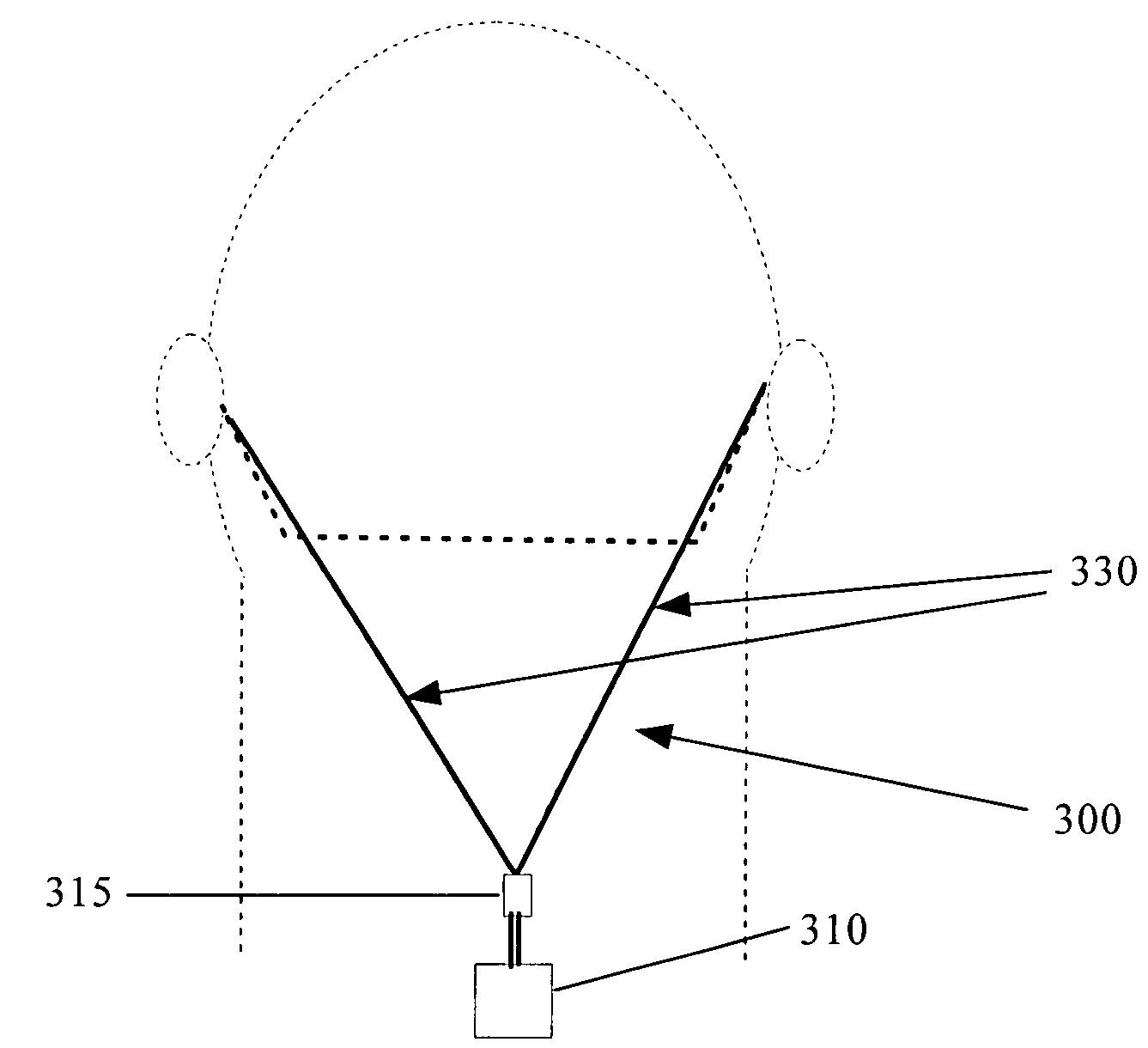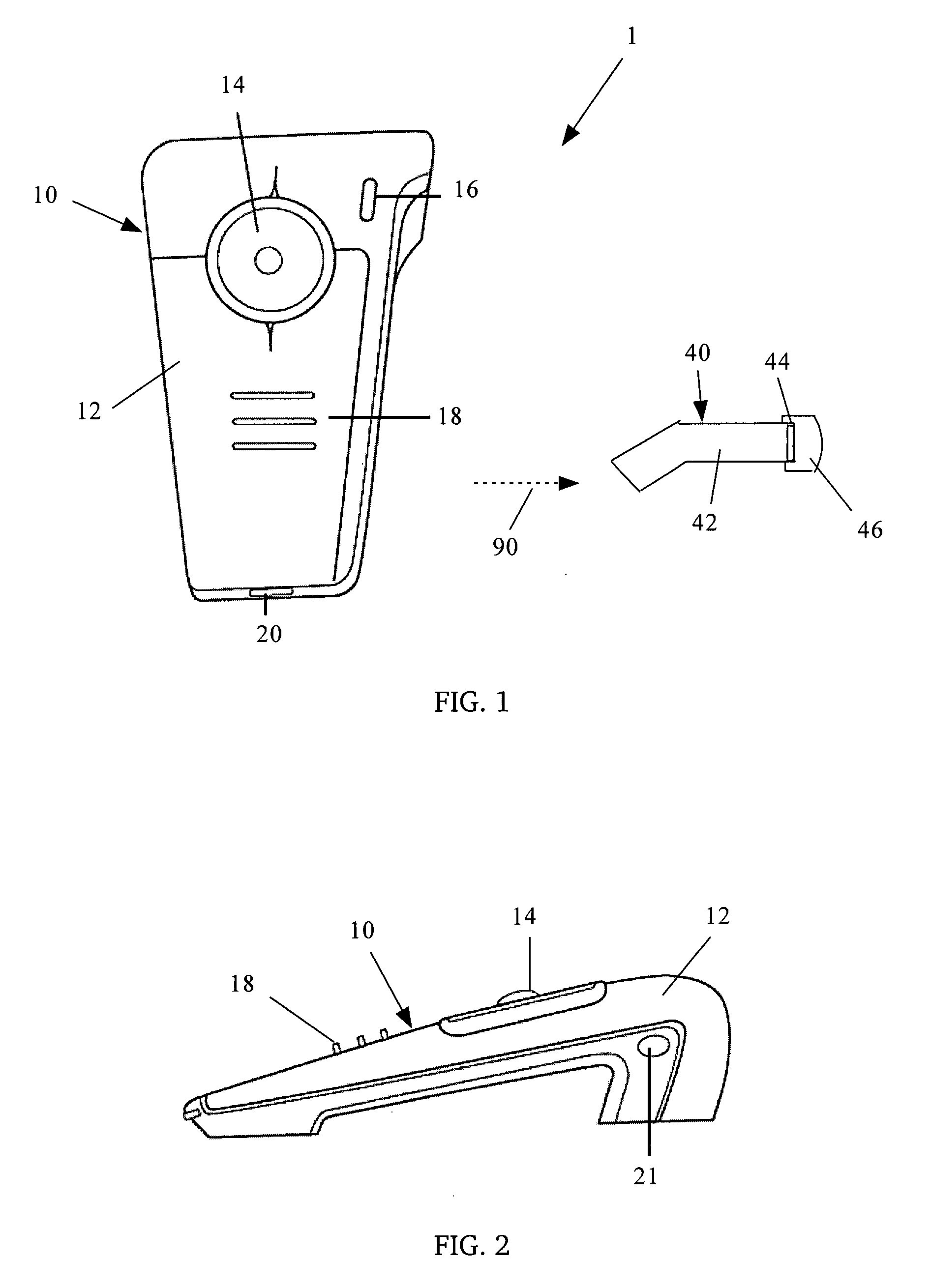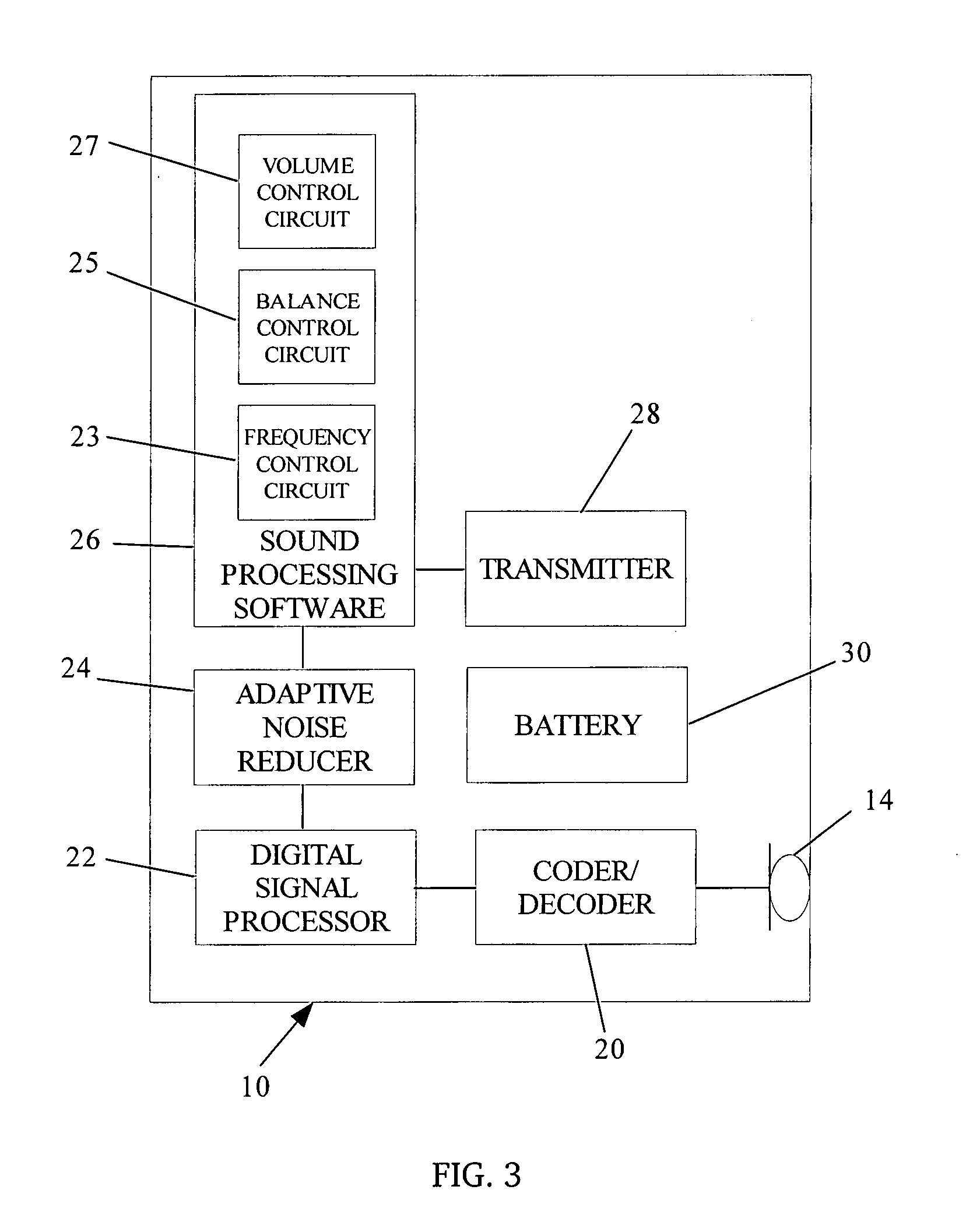Wireless multiple input hearing assist device
a hearing aid and multiple input technology, applied in the direction of deaf-aid sets, electrical equipment, deaf-aid sets, etc., can solve the problems of squealing or feedback, conventional hearing aid devices do not allow the user to independently control the various frequency characteristics, and squealing is often an annoyance for hearing aid users
- Summary
- Abstract
- Description
- Claims
- Application Information
AI Technical Summary
Benefits of technology
Problems solved by technology
Method used
Image
Examples
Embodiment Construction
[0024]Various exemplary embodiments of the present invention are directed to a wireless hearing assist device including a receiver unit in remote communication with a microphone unit. The term “hearing assist device” as used herein is not intended to be limited to devices for persons who are hearing impaired. Instead, the term “hearing assist device” is intended to apply to devices according to the present inventive teachings and may be used by any person seeking to obtain the benefits described below. Accordingly, the hearing assist device described herein may take many forms in which a speaker is placed within or adjacent the ear canal to improve the user's hearing in a variety of environments. Moreover, the hearing assist device according to the present invention may be part of a headset device which also performs other functionality, such as a communicating headset or an entertainment headset.
[0025]FIG. 1 shows a hearing assist device, generally designated by reference number 1,...
PUM
 Login to View More
Login to View More Abstract
Description
Claims
Application Information
 Login to View More
Login to View More - R&D
- Intellectual Property
- Life Sciences
- Materials
- Tech Scout
- Unparalleled Data Quality
- Higher Quality Content
- 60% Fewer Hallucinations
Browse by: Latest US Patents, China's latest patents, Technical Efficacy Thesaurus, Application Domain, Technology Topic, Popular Technical Reports.
© 2025 PatSnap. All rights reserved.Legal|Privacy policy|Modern Slavery Act Transparency Statement|Sitemap|About US| Contact US: help@patsnap.com



